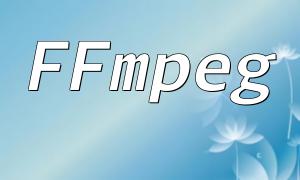Camera usage has become increasingly widespread, not only for live streaming and photography but also for recording time-lapse videos. Time-lapse videos present an accelerated view of time by displaying a series of consecutive photos at a lower frame rate. In this article, we will guide you on how to use PHP to call the camera and record time-lapse videos.
First, ensure that your camera is properly connected and configured. On Linux systems, you can use command-line tools to check if the camera is available. Use the following command to list the available camera devices:
ls -l /dev/video*
If you see a device like “/dev/video0” in the output, the camera is successfully connected. If no device is found, check the physical connection and make sure the correct drivers are installed.
Before using PHP to call the camera, we need to install some essential packages like ffmpeg and fswebcam. These tools will help us capture photos and merge them into a video. You can install these packages by running the following command:
sudo apt-get install ffmpeg fswebcam
Next, we will write PHP code to call the camera and record a time-lapse video. PHP will execute command-line operations through the shell_exec function to capture photos and generate a video. Here is a simple code example:
<?php
// Set the interval and total frame count
$interval = 1; // Capture a photo every 1 second
$total_frames = 60; // Capture a total of 60 photos
// Define the directory to store photos
$photos_dir = '/path/to/photos'; // Replace with the actual path
// Create the directory to store photos
if (!is_dir($photos_dir)) {
mkdir($photos_dir, 0755, true);
}
// Loop to capture photos
for ($i = 1; $i <= $total_frames; $i++) {
$photo_file = $photos_dir . '/photo' . $i . '.jpg'; // Photo filename
$command = 'fswebcam -r 640x480 --no-banner ' . $photo_file; // Command to capture a photo
shell_exec($command);
sleep($interval); // Wait for the specified interval
}
// Merge photos into a time-lapse video
$video_file = '/path/to/video.mp4'; // Replace with the actual path
$command = 'ffmpeg -framerate 24 -pattern_type glob -i "' . $photos_dir . '/*.jpg" -c:v libx264 -pix_fmt yuv420p ' . $video_file;
shell_exec($command);
// Delete the captured photos
array_map('unlink', glob($photos_dir . '/*.jpg'));
rmdir($photos_dir);
?>
In the code above, we first set the capture interval and total frame count. Then, using the fswebcam command, we capture photos and store them in the specified directory. After capturing the photos, we use ffmpeg to merge them into a time-lapse video and save it to the given location. Finally, we clean up by deleting the temporary photos.
Save the code above as a PHP file and replace the paths with the actual paths on your system. After that, you can run the PHP file either through a web browser or command line to start capturing the time-lapse video.
By using PHP to call the camera and record time-lapse videos, we can easily create time-lapse footage that shows slow changes, such as sunsets, cloud movements, or plant growth. This tutorial provides a simple method to implement this functionality on your server. We hope this guide helps you create your own time-lapse videos with PHP!









